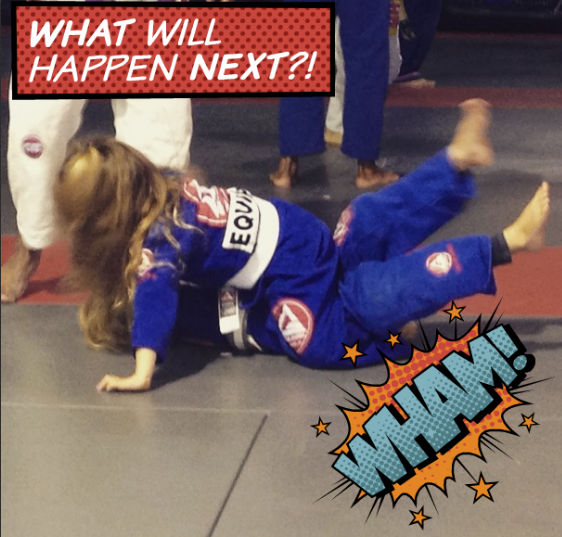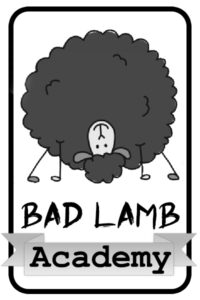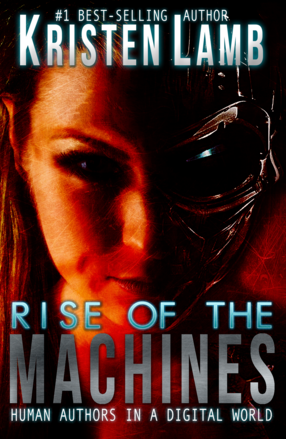As a fiction author, you will often feel like an acrobat spinning plates while standing on your head and juggling fiery chainsaws. There are so many components to keep track of, lest you end up down the Bunny Trail of No Return. Organization is key when it comes to being a successful novelist.
Before we continue, if you want better odds of winning my 20 page critique at the end of the month, I am running a separately drawn contest over on my Dojo Diva blog where I am talking about why everyone (but especially females) needs at least some basic self-defense training. Comments count for one entry. Comments with a hyperlink count for two. And you get to learn about beating up bad people.
Moving on…
We have spent the past few weeks studying the fundamentals of what makes up a novel, and today we are going to discuss the actual scenes that make up a novel and how to keep track of them. It is easy to get lost when dealing with a structure as complex as a novel, so I hope to give you a nifty tool to keep everything straight.
First, let’s talk about scenes.
My friend and mentor James Scott Bell has given me permission to use a sample of his teachings as a guide, and again I strongly recommend getting his book. I was a pantser for ages and revisions were a nightmare. Plotting might as well have been sanskrit until I read his books and instead of reinventing my own methods, I just like to tell writers about the good stuff.
According to James Scott Bell’s Plot & Structure, scenes do four things. Bell calls these the four chords of fiction:
The two major chords are: (1) action and (2) reaction.
The two minor chords are (1) setup and (2) deepening.
Back when I used to content edit, I was known to draw cute little cartoon flies on the page when the story took off down a bunny trail and lost my interest. This became known as my, “Fly on the Wall of ‘Who Cares?’” and was a signal to the writer that this was a section with no real purpose so it needed revision, tightening or to be cut completely.
The reader is a fly on the wall when it comes to the world we are creating. Make them the fly on the wall of something interesting at all times.
How do we accomplish this?
All Scenes Need Conflict
Conflict is the fuel that powers the story’s forward momentum. “Scenes” that are merely back-story, reflection (rehash of what the reader already knows) or information dump, slow down the story and make the reader either want to skim ahead or put the book down. Bad juju.
We want our readers hooked from the beginning until we finally let them go on the last page. How do we accomplish this? We add lots of conflict.
Scenes, according to Bell, need three components, collectively known as HIP—Hook, Intensity & Prompt.
Hook—interests the reader from the get-go. This is why it is generally a bad idea to start scenes with setting. Waxing rhapsodic about the fall color is a tough way to hook a reader. If you do start a scene with setting, then make it do double-duty. Setting can set up the inner mood of a character before we even meet him. Setting should always be more than a weather report. Try harder.
Intensity—raises the stakes. Introduce a problem. Scenes that suddenly shift into reverse and dump back-story KILL your intensity. Cut scenes at meals unless there is a fight (okay, just something tense). If your characters are in a car, they better be in an argument or a car chase. Also cut any scenes that the sole purpose is to give information. Have a scene that’s sole purpose is two characters talking about a third? CUT! CUT! CUT!
We are writing novels, not screenplays for Days of Our Lives.
Prompt—leave the scene with work left undone and questions left unanswered. If your character is relaxed enough to happily go to bed at the end of a scene, that is a subconscious cue to your reader that it is okay to mark the page and close the book. There should always be something unsettling that makes the reader want to know more.
Going back to the chords of the writing. Every scene should involve one of your key characters in pursuit of an interesting goal that is related to the overall conflict of the story. Each of these scenes are stepping stones that take your character closer to the final showdown. Most of the time, it will feel like two steps forward and one step back.
Your POV character (protagonist) sets out to do X but then Y gets in the way. Your character then will have some kind of a reaction to the setback.
So we have the major chords I mentioned earlier:
ACTION–> REACTION to the obstacle
Now when we add in the minor chords, it might look something like this:
Setup–>ACTION–>obstacle–>REACTION to the obstacle–>deepening
Setup and deepening need to be short and sweet. Why? Because they don’t drive the story, conflict does. We as readers will need a certain amount of setup to get oriented in what is happening, but then drive forward and get to the good stuff. Deepening is the same. We want to know how this conflict has changed the course of events, but don’t get carried away or you risk losing your reader.
Remember when we talked about antagonists? How the BBT is responsible for the problem in need of resolution, but that EVERY scene should have an antagonist.
Allies will often provide the lion’s share of the conflict of a story. One of my favorite movies is Finding Nemo. Darla the Fish-Killer is the BBT, because had she wanted a puppy for her birthday, Nemo would have never been taken and wouldn’t be in danger. But who creates MOST of the conflict? Ally, Dori. For most of the story. Marlin and Dori are at odds.
Marlin wants to keep searching for the clue to find his son.
Dori wants to talk to the sharks and attend a Fish Anoymous meeting.
So how do you keep track of all these elements? The note card is a writer’s best friend. We will discuss different methods of plotting in the future, but I recommend doing note cards ahead of time and then again after the fact. I use a very cool tactic from screenwriter Blake Snyder’s Save the Cat.
On each note card, I write the location, then a one-sentence header about what the scene is about. Then there is a neat little symbol for conflict (><) I use to show who is in conflict in this particular scene. Then I do a micro conflict lock. Who wants what? I also use an emotional symbol to note change +/-.
Characters should be changing emotionally. If your protag enters on a high note, crush it. Enters on a low? Give some hope. If a character is constantly okey dokey, that’s boring. Conversely, if a character is always in the dumps, it will wear out your reader and stall the plot.
I also note any facts I might need to keep up with. Has my main character suffered an injury? Lost her weapon? Gained a weaponized Bedazzler and a pet hamster?
Let’s look at an example from the movies. Romancing the Stone.
So the card might look something like this:
Jungles of South America (Location)
>< Joan (protag) and Jack (love interest/antagonist)
Joan wants a guide to get her to Cartajena, Colombia to trade the treasure map for her sister.
Jack wants to recapture the exotic birds he lost when the bus crashed into the back of his truck.
-/+ Joan finally convinces Jack to take her to Cartajena. (Note she started on a low. She was lost, in a crash and far away from Cartajena. She ends on a high note. Jack agrees to guide her to her destination)
Joan and Jack decide to go to Cartajena (decision), but then bad guys arrive and start shooting at them (prompt).
Yes, Blake Snyder’s system is designed to keep up with all the scenes a movie, but it can do wonders for novelists, too. When I finish my first draft, I go back and make set of cards. Using this system makes it painfully clear what scenes are in need of a total overhaul.
If I can’t say in one sentence what the scene is about, then I know my goal is weak, nonexistent or unclear. Too many people in conflict? Conflict might be muddy. Go back and clarify. If there isn’t any emotional change, then that’s a big red flag that nothing is happening—it’s a “Fly on the Wall of ‘Who Cares?'”
If I find a scene that’s sole purpose is information dump, what do I do? I have three choices. 1) Cut the scene totally. 2) Fold it into another scene that has existing conflict. 3) Add conflict. Note cards also make it easy to spot bunny trails—goals that have nothing to do with the A or B plot.
This tactic can help make a large work manageable. If you are starting out and outlining? Make note cards for each scene and who you foresee being in conflict. If you already have your novel written, but you want to tighten the writing or diagnose a problem you just can’t see? Make note cards.
Keeping organized with note cards is an excellent way to spot problems and even make big changes without unraveling the rest of the plot. There are, of course, other methods, but this is the one I’ve liked the best. Note cards are cheap, portable and easy to color code (you can also sub an Excel spreadsheet for cards).
For instance, each POV character can have a designated color. Using these cards makes it much easier to juggle all the different elements of great novels—characters, conflict, inner arc, plot, details.
Have any questions? Are there other methods that have worked for you? Please share so we all can learn. What is the biggest challenge you face when it comes to plotting?
I LOVE hearing from you!
To prove it and show my love, for the month of MAY, everyone who leaves a comment I will put your name in a hat. If you comment and link back to my blog on your blog, you get your name in the hat twice. What do you win? The unvarnished truth from yours truly. I will pick a winner once a month and it will be a critique of the first 20 pages of your novel, or your query letter, or your synopsis (5 pages or less).
Remember, for MORE chances to win and better ODDS, also comment over at Dojo Diva. I am blogging for my home dojo and it will help the blog gain traction.
For those who need help building a platform and keeping it SIMPLE, pick up a copy of my latest social media/branding book Rise of the Machines—Human Authors in a Digital World on AMAZON, iBooks, or Nook.










61 comments
1 ping
Skip to comment form
Excellent posting and full of great resources! Thanks for this! Question: What are your thoughts on including multiple scenes in a one chapter?
Wonderful blog post. Scenes can be so hard to handle sometimes 🙂 I think it’s important to remember to not get TOO hung up on this WHILST writing, though of course the main plot points should be drawn out before writing.
It would be great if you’d do a blog post on switching POV characters. I see a lot of people disliking switching views and I used to hate it as well until I found out it has something to do with HOW it’s done. Is the POV change important? Do it. If there’s no way around it, do it. But if it might as well be done from the POV of one of the POV characters, don’t.
In my story the Timeprisoner I was commended for doing good POV changes and those are the rules I follow. But it’d be great to learn more, especially as I’m doing that great fantasy elf novel 😉 (Which, btw, is on the second book now! I plan on finishing third book’s first draft this summer and spending autumn on editing the entire series.)
I opened this, saw the first photo, and burst out laughing…at work. Thanks. 😉 Great post, as usual.
Author
And THIS is why Kristen is no longer allowed in Home Depot 😀 .
I absolutely loved this post! ! I just returned from a writers conference and I feel like this was better info than some of the classes I went to. I’m in the middle of tightening up my manuscript and the cats are a great idea. Before reading this I had used a notepad that I color coded with location, past, present, pov, and one liners about what the chapter is about. I like the idea of identifying the conflict, mood, and asking if it’s resolved. Thanks so much!
Finally the light bulb went on! Working through the first draft of my first novel and I’m struggling with keeping everything organized. Seems I keep going down the rabbit hole in my excitement to actually get the words out of my head and on paper. Digging out my colored note cards and looking for a weaponized Bedazzler!
Awesome, Awesome post! The notecard part will be especially helpful for me as I approach a new draft for my novel. And thanks for the suggestions for “Plot and Structure.” I have been flying through it and learning a lot!
Hey Kristen, I gained a lot from this post. Thanks for the clear instructions on how you organize your notecards. Also, the note about how allies supply most of the tension was eye-opening for me. I use Scrivener, which has a notecard view in which all of the documents you are working on become notecards that you can color-code and label and leave notes about. You can exactly apply your method to that system, which is something I’ll be doing for my current novel. Keep up the good words.
Reblogged this on jademphillips.
Reblogged this on Owen Banner and commented:
Kristen gives some very practical tips for creating an easily readable outline of your story’s rising and falling action. Check it out.
CartAjena, ColOmbia. Sorry to point this out but, what’s good for the goose is good for the gander.?
Author
Pththththth, ok. I will fix it 😀 . Actually, I uh just put in…typos to see if…if you are paying…attention. Yes, that’s it….
Self correction: CartAGena.
Awesome. This succinctly explains why some chapters I write need to be thrown away, and why I’ve gotten really sucked into others. Before this post, I realized some of these chapters were me simply brainstorming or summarizing what’s already come to pass so my characters and I can figure out where to go next. I’ve gotten good at spotting these moments but I love your sentence summary thing per chapter. So going to add that to my outlines.
So helpful! When I finish my second draft, I’m using the notecard idea.
Reblogged this on jean's writing and commented:
Read, study this awesome blogger. Kristen is a wealth of information for all of us writers. Here is Part 8 to help with writing the perfect scene.
Kristen,
I enjoy reading you’re articles, blogs and I have watched some of your video’s. You get right to the heart of the problem no fooling around. Love it.
James Scott Bell is a genius at simplifying this process.
I like your idea about the index cards. I use a spreadsheet to track the same things (as you suggested as well). Less clutter.
If you’re reading this and don’t own Plot & Structure by James Scott Bell, go and remedy that. The book is my plotting Bible.
On your last post I said I keep thinking you can’t possibly clear things up even more, but then you would prove me wrong. Same comment/different post: you’ve made the path ever more clear… again.
I do have a question though: My book has two story lines. The first is progressive through time, using different characters, showing how the BBT came into power (so there’s actual history, shown through fictional characters). The 2nd story line throughout the book is the hero in present day, who defeats the BBT. This means that the fictitional characters in most of the 1st story line will end up dead, defeated, or going blindly down the wrong trail. Those chapters contain history and a lot of technological info, but should they be shorter than the hero’s chapters, since they always end up with the BBT winning?
Does that sound like a silly question?
I have found note cards useful in writing academic papers and in literary work it helps to set the cards for chapters in a table as a sort of card map to see direction and may want to rearrange cards in different progression. I still hand write original manuscript before typing rough draft.
How do you recommend handling a scene in which there is movement, or a shift in cast? For example, if the character walks into another room and encounters a different character. Would you consider that a different scene?
Author
Not necessarily. Scenes in respect to novels often revolve around following a choice or an action.
Loved the “Fly On The Wall”!
I’m going to try this method with my current novel. Thank you!
Well, now I know what to do with all my note cards. Using them to organize scenes is a really great idea. Thanks for another awesome post!
Love plot cards. Great item for the toolkit.
Actually, I think this will help me edit my words, I can now eliminate a few scenes.
I’ve got a question about how I handled scenes in my last book. It’s an adventure story, and I’m pretty sure I followed all the points you’ve illustrated here. It’s gotten decent reviews. But one of the things that readers seemed to have trouble with in my last book, and my editors said nothing about, was the switching back and forth between timelines. There was a time travel element in the plot and so every other chapter for most of the book switched between one timeline to the other. Is something like that a general no-no? Why would my editors not say anything about it if some of my readers (and professional reviewers) had a problem with it? Maybe I just didn’t handle it with enough finesse.
Thank you for this. Very inspiring! The writing program Scrivener has an index card system (with keywords, color-coding, etc) that would dovetail quite nicely with Blake Snyder’s tactic.
Also, this might be helpful , too. Interview with Dustin Lance Black, screenwriter of Milk, J Edgar:
http://nofilmschool.com/2014/07/writing-process-oscar-winning-screenplay-dustin-lance-black
Thanks Kristen. Immensely helpful, as usual, and the timing has been spot-on for me… I am deep in the land of revisions-from-hell, so I have appreciated your comments and advice on structure. Would that I had known all this earlier! 🙂
I use the spreadsheet version of your cards, but I think perhaps it needs a little expansion 🙂 this series of articles has been absolutely invaluable to me, I’ve discovered so much about my manuscript that otherwise would have bothered me, but I never would have been able to put my finger on.
I’d like to second Gry Ranfelt’s request for a post on POV… unless there already is one, in which case the link would be awesome 🙂
Author
I can post on that. Been a while. Refreshers are always good.
I am thoroughly appreciating your posts! Thank you. I hope to share your wisdom and refer people to your blog. You offer a strong voice of direction.
Reblogged this on M. McLeary-Graham, Novelist and commented:
Extremely important considerations in novel writing.
Wonderful advice. I like how you always break it down to make it easy to digest. And speaking of digest, I like how you point out cutting dinner scenes unless there is conflict. I read too many dinner scenes in books that go nowhere.
Kristin,
I make it a point to read your blogs, especially those on craft. I learn new ways of doing things and I’m reminded of all the elements that make up a good story. Thank you!
Author
You are most welcome! 😀
This is a great post for a self confessed pantster Kristen. Thank you. All this planning seems daunting to me but I’m willing to give it a go next time around. As a pantster, all of this luckily comes naturally to me as I write. I may be one of the lucky few if that is the case. I wish I had the time to plan to this degree! 🙂 thanks again! Mark
I love hearing about other ways to plot. Thanks for the note card tips.
Kristin, every time I ask an author about how he/she organizes plot and structure, I get different answers. I understand that organizing a novel is a very personal thing and people keep telling me that I have to find the way that works best for me. I have never found it. I still struggle with plotting and keeping the hundreds of details and ideas together while I write. This has caused me to abandon 2 near-finished manuscripts. Now, reading this post, I understand that one of my main problems is that I don’t structure for conflict. I will definitely try this method and I’ve already downloaded James Scott Bell’s book. Thanks for clarifying a muddy topic for me!
Wonderful post! Very clear. It’s interesting to me that many successful best-selling authors out there fail at this kind of “Setup–>ACTION–>obstacle–>REACTION to the obstacle–>deepening.” In many stories I find stream of consciousness “scenes” where the writing meanders for pages and I’m sighing and skimming all the way through. Do you think there are two standards out there? One for established authors who can self-indulge and another standard for the newer authors?
I’m moving from screenwriting to novels, so it’s great to see you talk about how the same scene work rules apply to both, especially about conflict – so true.
Good stuff. There’s an old saying in screenwriting (which, I believe, applies to storytelling in general) that every scene should either 1) increase the conflict/stakes, or 2) reveal something about character.
I have been writing for 30+ years, I have a few published novels, but I have to tell you, I learn something from every blog you write. Thanks!
Reblogged this on Nancy Segovia and commented:
Action + Reaction = Gotcha
Thanks, Kristen! As usual, your post is helping me fix my crap. I realized that I have a bunch of info-dumping. I think it’s where I’m exploring my world and getting to know my characters. I will be keeping that stuff, but in a separate file for my (hopefully) series bible.
Love the post! Thanks for sharing. I am not actively working on my fiction novel since my first priority is the non-fiction novel on the importance of character. I’ll have to come back and re-read this and your other posts on structure before I start it.
Reblogged this on Chronicles of a Nerd and commented:
Yet more great advice.
This blog is one of the most helpful in this series so far, and I’ve learned something from each of them. When I needed to move scenes before, I created a word doc for each chapter, with scenes listed in each. It was nearly impossible to track scenes and/or move them around without opening each doc to review. Thank you for the note card suggestion as well as color coding for the various elements. What an efficient way to quickly identify each. Also, I will post this on my laptop: action/reaction and setup/deepening. Lots of revision to do now without such dread.
I always can relate to JS Bell, and J Snyder too. This seems like it works better for romance/women’s fiction than some systems that rely on the scene ending in disaster. But how do sequels fit in? Applying it to the first few scenes of my wip I find that sometimes nothing is resolved until the sequel. Are you kind of rolling the scene and sequel together here?
And can I suggest a symbol for and attraction style of conflict? 🙂
Sorry – it didn’t register my symbol – a reverse of both the sideways vs in the “conflict” symbol. Too hard to explain…
I like this post, very informative. I think sometimes we get lost in the story without realizing some of the key components of keeping our readers interested. When my editor got a hold of my manuscript, one of her main focuses was CUT the unnecessary stuff, but as a writer it seems like whatever I write is necessary. Ha ha
Reblogged this on scribblings007.
Excellent and very helpful post! Thanks,needed this
But, but ….. I love Days of our Lives! Seriously, great post. Excellent information.
I’m with you, I love days Days also. I like to listen to the dialog their writers are phenomenal.
I know. The writers are so good at explaining so much through dialogue.
Just what I need! Thank you for your excellent blog posts!
Reblogged this on Swamp Sass and commented:
Reblogging from Kristen Lamb, my hero!
It was helpful. Very much. Thank You
I personally utilize power point slideshows in place of note cards. I can add, delete and rearrange everything as I need!
[…] How to Manage Scenes in a Novel-Part Eight […]